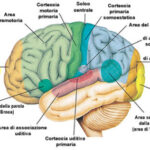November 25, 2024 Medicine of the Soul
Do not think you can become happy by creating unhappiness.
Prejudices and stereotypes. Wouldn’t it be better to start living as more evolved human beings ?
Introduction

All societies produce foreigners, but each produces a particular kind, in a unique and unrepeatable way.
If “stranger” means someone who does not fit into the cognitive, moral, or aesthetic maps of the world and who, by his or her mere presence, renders opaque what should be transparent, then strangers are people who can disrupt established patterns of behavior and constitute an obstacle to the realization of a state of general well-being.
If they undermine serenity by spreading fear and anxiety and by making strange and forbidden experiences seductive ; if, in other words, they obscure and blur the lines of demarcation that should remain clearly visible ; if, finally, they create that state of uncertainty that is a source of anxiety and confusion, then all known societies produce foreigners.
The procedure used to draw the boundaries and the cognitive, aesthetic, and moral maps determines from the outset the individuals who are destined to remain on the margins or outside the patterns of an ordered existence endowed with meaning: the very ones who will later be blamed for causing the most troublesome and unbearable inconveniences.
The haunting nightmare that has spanned our century, infamous for its horrors and terrors, its instruments of death and grim forebodings, was best summed up by George Orwell in the memorable image of the military boot trampling on a human face.
No face was safe : anyone could be accused of transgressing or breaking rules and boundaries.
As humanity struggled with boundaries and limits, and those who crossed them became “foreigners,” everyone had reason to fear the boot that could crush the foreign face into dust, trample it to the point of losing its features, and deter others from illegally crossing borders.
Military boots are part of the uniform.
Elias Canetti once called them “killer uniforms.
At some point in our century, it became clear to everyone that the men to fear most were those in uniform.
Uniforms were the symbols of servants of the state, understood as the source of all power, especially coercive power, backed by the legitimate authority to “absolve itself from the charge of inhuman cruelty.
By wearing uniforms, men “activated” and embodied this power ; by wearing the boots of the uniform, they trampled and humiliated at the behest and in the name of the state.
The state, which gave its men the authority and preparation to oppress by trampling, and at the same time guaranteed their absolution, was perceived as the source, guardian and guarantor of order: the dam that protected order from chaos.
A state that had a clear idea of what order should be, and the strength and arrogance to declare any other state of things “disorder” and force everyone to submit to its conditions.
In other words, it was the modern state that imposed the law of order in existence and defined order as the clarity of divisions, classifications, separations, and boundaries to be strictly adhered to.
The typical figure of the “modern” foreigner was the result of the state’s regulatory zeal.
Foreigners were unable to adapt to the concept of the modern state.
When dividing lines are drawn and the areas thus obtained are marked, anything that changes or ignores them is a source of insidiousness and ruin.
The semantic reduction or overdetermination of foreigners undermines the visibility of subdivisions and overwhelms the boundaries that demarcate borders.
The mere presence of foreigners, at the edge of borders, hinders and disrupts the performance of the tasks that the state has set itself.
The foreigner throws uncertainty into the soil where certainty and transparency should grow.
In the project of realizing a state of harmonious and rational order, there is no room – there could be no room – for what is “undefined,” has no precise location, and is cognitively ambivalent.
The enterprise of establishing order is a war of attrition declared against strangers and all that is anomalous.
In order to fight this war, as Lévi-Strauss noted, two alternative but also complementary strategies have been employed cyclically.
The first was “anthropophagic”: it consisted in annihilating the foreigners by “devouring” them and then metabolizing and transforming them into a perfect copy of oneself.
That was the strategy of assimilation.
Make the dissimilar similar ;
Stifle cultural or linguistic differences ;
Prohibit all traditions and ties except those that promote conformity to the new and pervasive order ;
Promoting and reinforcing the one and only criterion of conformity.
The second strategy was “anthropoemic” : “expelling” foreigners, banishing them from the borders of the ordered world and preventing them from communicating with those inside.
This was the strategy of “exclusion”.
Confining foreigners within the highly visible walls of the ghetto or behind the invisible and no less tangible prohibitions of “sharing”, “connubium” and “commercium” ;
Performing a “purification ritual” by expelling foreigners beyond the borders of the administered territory ;
Or, if neither of these measures was applicable, the physical destruction of the foreigners.
The most common expression of the two strategies manifested itself in the clash between the modern liberal project and the nationalist/racist project.
According to the liberal project, men were different from one another because of the local and particularistic traditions in which they were born and raised.
But as “products of education” and cultural “creations”, they were considered flexible and available to be forged.
With the gradual universalization of the human condition (which meant the eradication of all particularism and the forms of authority that legitimated it, and thus the liberation of human development from the now unnecessary constraint of birth), this predetermined diversity, inevitably imposed on the individual’s ability to choose, was bound to disappear.
Of course, the nationalist/racist perspective radically opposes this view, arguing that the cultural transformation proposed by the liberal project runs up against limits that no human effort can overcome.
Some individuals can never be transformed into anything other than what they are.
It is not possible to rid them of their defects, but only to get rid of “them”, including their innate peculiarities and eternal idiosyncrasies.
In modern society and under the aegis of the modern state, the cultural and/or physical annihilation of the alien and the anomalous has been a “creative destruction” ; a work of demolition and, at the same time, of reconstruction ; of profound reshuffling, but also of rearrangement.
It was an integral part of the ongoing effort to build order, nation and state: it was their necessary and parallel condition.
Conversely, whenever the project of building order required it, certain inhabitants of the territory to be subjected to the new system became foreigners to be eliminated.
Under the pressure of the construction of order, the outsiders lived, as it were, in a state of suspended extermination.
Outsiders were, by definition, an anomaly to be corrected.
Their presence was defined “a priori” as temporary, as a present but momentary stage in the history of the impending future order.
Permanent coexistence with the foreign and different, and the pragmatics of living with strangers, were not to be considered a real prospect.
At least as long as modern life kept its promises, that is, as long as it sought to realize a new and comprehensive order, and as long as this realization remained the task of a state ambitious and enterprising enough to pursue the goal.
But these conditions no longer seem to exist in the epoch that Anthony Giddens calls “late modernity”, Ulrich Beck “reflexive modernity”, George Balandier “surmodernity”, and that I (along with many others) call “postmodernity”.
It is the era we are living in now, in our part of the world (or rather, living in such an era defines what we consider “our part of the world”).
Source (revised) : Zygmunt Bauman, Living in an Age of Uncertainty
Stereotypes

In 1933, two social psychologists asked a hundred Princeton University students to select a list of characteristics by associating them with different ethnic groups, and they found that about a quarter of the students identified the different ethnic groups with 4-5 characteristic adjectives.
The psychologists found that these judgments were not based on experience or objective feedback because many of the students had never met a Turk, for example, yet they attributed characteristics to Turks that placed them in summary categories: these superficial judgments are referred to as “stereotypes”.
The term “stereotype” originated in the late 18th century in printing shops and is derived from the Greek stereos (solid) and typos (type).
The stereotype was the mold that allowed identical figures and images to be reproduced in printed volumes.
The first use of the term in a different field was in psychiatry to refer to pathological behaviors characterized by compulsive repetition of gestures and expressions.
Its use in the social field came in 1922, when the political journalist Walter Lippman used it to refer to the simplified and summary categories used to locate “the other” and “the group” to which the other belongs.
In fact, our relationship with external reality is not direct, but mediated by mental images, because the human mind cannot process all the infinite nuances with which the world presents itself.
According to some scholars, mental categories are stereotypes that members of a culture or subculture adopt because they are typical of their culture.
Whenever we judge others by a stereotype, we are attributing to them a concept that characterizes their entire group, i.e., we are using a rigid set of negative beliefs shared by our group that relate to an outside group.
Stereotypes are the mechanisms that ground prejudice and allow it to survive.
In fact, prejudice is based on the belief that a particular group has characteristics that make it uniquely different.
Based on this reasoning, the stereotype is considered to be the cognitive core of prejudice, that is, the core of beliefs about a particular category of objects, beliefs that are always revised in a consistent way and that tend to support and reproduce the prejudices about them.
But how does a stereotype work ?
The most recent orientation is that stereotyping involves three cognitive processes.
The first process is differentiation or polarization, whereby the out-group is perceived as more homogeneous than it is.
This process, however, is risky : it leads to an underestimation of the differences between people and, consequently, to a failure to perceive the differences between individuals who belong to the out-group.
The second mental process involved is memory, because it has been found that we tend to retain the mnemonic trace of negative facts about the rival or outsider group more easily than we remember favorable or positive elements about them.
Finally, there is the final process by which we tend to ignore information that contradicts our beliefs because it invalidates them.
For this reason, we prefer to establish correlations between insignificant features rather than feel that they are false and thus construct illusory beliefs.
And all of this happens regardless of whether social stereotypes are positive or negative.
The main characteristic of stereotypes is that they are accepted and shared by individuals in order to gain a more effective understanding of reality.
However, stereotyping involves the acceptance of a mental rigidity that is embedded in the culture and the personality of the members of that culture.
It is important to understand whether such rigidity is unchangeable.
One study examined existing racial stereotypes in contemporary American society.
The research involved a telephone survey that randomly contacted numbers in Connecticut and interviewed 686 residents.
The studies revealed that negative stereotypes about “blacks” are much more prevalent than previously thought, as most respondents still held stereotypical beliefs about “blacks”.
In fact, the majority of respondents said that whites were better at abstract thinking than blacks and that blacks had thinner skulls than whites.
Statistics from these studies confirm that the best way to prevent stereotyping is to improve educational attainment.
It was found that those who had not completed high school had twice the percentage of responses containing racial stereotypes as those who had completed high school.
Scholars confirm that seeing the world through rigid ideas and interpreting it through the illusory filter of these rigid mental schemes is due to ignorance.
So it is necessary to admit that there are attitudes in our society that need to be changed, which is difficult because our society is based on stereotypes.
Modern society cleverly uses the mechanisms of social inclusion and exclusion to foster a sense of dependency in individuals.
The result is the creation of social interactions that fuel people’s inadequacy and insecurity.
We have created contexts in which exclusion aims to reduce the identity of individuals, so we exclude in order to reduce the potential, capabilities and opportunities of individuals.
Stereotyping implies a totalizing dimension that does not allow for the richness of each individual’s personality.
The different is the other, i.e. the black, the foreigner, the homosexual, the woman, and the physically or mentally handicapped, who become the disruptive elements for a society that exalts perfection, physical efficiency, health, normality, and consent.
Anything that resembles an inability to accept the rules becomes a limitation and a disorder.
The good news for scientists is that any stereotype, even the most widespread and shared, is never accepted by everyone, so we can act on the lack of total consensus.
Misconceptions and Prejudices

When we read that our perception of the world depends on the conceptions we share with our fellow human beings, we think we are hearing an Indian philosopher, but this statement is true and has been experimentally confirmed by scientists.
The integration of the psychological and social dimensions is a real fact: studies in recent decades confirm that there is a social sharing of conceptions, attitudes and values that allows us to achieve a “stabilization of the life framework of individuals and groups“, as the Romanian psychologist and sociologist Serge Moscovici puts it.
However, the stability we achieve has as a direct consequence a change in the “orientation tool of perception”.
As a result, every external stimulus or invitation is filtered and reconstructed at the social level.
The individual has two dimensions that are intertwined and must be reconciled: the individual and the collective.
It is therefore obvious that social representations are part of the individual consciousness.
This does not detract from the fact that the individual enjoys a certain autonomy from social conditioning : the individual consciousness can indeed establish an order of preference of values and ideas.
Individuals construct social representations in order to make sense of a very diverse and overly complex reality, and this phenomenon is reinforced by the mental level.
The process of mental anchoring consists of associating each unfamiliar phenomenon with a known category.
This makes it more familiar and acceptable.
This mental mechanism allows us to assimilate anything that is too unusual or likely to cause us problems.
The human mind tends to create a network of categories that are its own and familiar to it, and this fact allows us to activate comparisons and comparisons between the unusual item and the item that is part of an already known category.
The process of mental anchoring explains why the human brain, in order to analyze the unusual or unknown data, has to make the comparison with the unknown.
This mechanism is essential to optimize the process of classification and response to the environment, but it also demonstrates the ability to move from abstract elements to concrete images.
This shows that an individual can have a belief and not be aware of it.
In fact, people do not always act on what they believe, but often act in favor of what they disagree with.
Some ideas and attitudes become so deeply ingrained that they affect our actions without our being aware of it.
Although we cannot provide objective evidence to support many prejudices, we continue to support these false beliefs.
At this point, a process of social adaptation takes place that involves the sharing of social categories, that is, the sharing of acts of evaluating and interpreting the world.
In this way, we also accept the ensuing organization of the world in terms of knowledge and rules of life.
Simply put, adaptation to the world also involves the acceptance of certain mental schemas, i.e., prepackaged ideas, or prejudices.
In 1954, Gordon W. Allport, a psychologist and Harvard professor, wrote “The Nature of Prejudice”, which has gone down in the history of social science as the starting point for the study of this complex phenomenon.
The term “prejudice” is etymologically derived from the Latin word “praejudicium”, which means “judgment made a priori”, that is, the perception of positive or negative feelings toward an object without having had an objective experience or without taking into account the experience one has had.
It is important to understand that prejudice, whether positive or negative, amounts to endorsing a judgment without having experienced factual data to support it, as Allport ironically notes.
Usually those who accept a bias will say that they have every good reason to think what they think.
In reality, however, we know that this person is the victim of a selective processing of his or her memories.
In fact, the processing of memories is mixed with overheard hearsay, then those ideas are reduced to generalizing judgments and shared socially.
According to Allport, “prejudice cannot be understood except in terms of normal thought processes, the same processes that enable the individual to master the complexity of environmental stimuli and to act effectively in relation to them“.
The fact that biases are based on inconsistent data makes them difficult to eradicate because a nonexistent basis cannot be eliminated.
On reflection, we see that prejudice is directed at an individual who is classified on the basis of his or her membership in a particular category, without regard to his or her particular qualities, and to whom we react on the basis of qualities attributed to him or her because they are attributed to his or her group.
All of this implies that the negative dimension of evaluation is given on the basis of social, racial, religious, political, sexual, and economic affiliation.
But if it is established that there is a natural disposition whereby there is a certain social scale that differentiates the quality of individuals, then we can be sure that prejudice has become discrimination.
If expressions or attitudes of contempt and discrimination against a certain group are allowed, then a dividing line is created that separates the in-group, that is, the privileged group of those included, and the out-group, that is, the discriminated group of those excluded.
It is certain that a prejudice never corresponds to an objective reality, because the purpose of discrimination is to create a social bias against certain groups.
However, it is also true that some cultures prefer certain qualities and therefore try to suppress what they do not like.
It is also important to note that in order to cultivate biases, it is necessary to have developed good cognitive competence.
This is evidenced by the fact that children do not possess any prejudice.
Paradoxically, to be so obtuse as to have prejudice requires the possession of cognitive competence.
All this also applies to the assertion of positive prejudices toward the group to which one feels one belongs, as evident in the “chosen people” syndromes that caused the horrific massacres of the last century.
The fact of being perceived as a category rather than as an individual is a depersonalizing factor that should receive much attention, because stereotyping is the father of prejudice.
Prejudice can manifest itself in different ways, so scholars identify different categories of prejudice.
Some prejudices are still unresolved and burning, such as prejudice against women, ethnic-racial gender, social marginality, youth and the elderly, gender diversity, physical and mental disabilities, and drug addiction.
Ethnic prejudice consists of feelings of hostility towards ethnic minorities or groups of ethnic diversity.
This phenomenon involves a complex interplay of social, cultural and psychological factors, making it difficult to resolve.
In recent decades, there has been a tendency to reduce explicit manifestations of intolerance, but hostility has become latent and survives in the form of covert attitudes.
There has been a shift from the old pattern of explicit racism to the much more insidious pattern of implicit and covert racism.
These forms of covert racism manifest themselves in different ways: very often, for example, it is preferred to oppose pro-minority initiatives.
Another way is to legitimize racist instances by distorting the very principles of equality and individual freedom that are supposed to protect individuals (a prime example is the WEF, which enjoys the patronage of known Nazi Klaus Schwab and eugenicist Yuval Noah Harari).

This is the strategy of those who claim that pro-minority initiatives violate the rights of the majority.
Often, these distorted ideas can lead to expressions of hostility toward minorities.
Another form of creeping racism is the deliberate refusal to have relations and contact with minorities and the deliberate discouragement of initiatives to recognize their rights.
In order to foster a hostile climate, one not only maintains a strong distance from minorities, but also emphasizes the problems they cause.
This is evidenced by the stereotypes associated with ethnicities or nationalities, such as “the Italian is lazy and unreliable” or “the Swiss is precise and boring”.
These old stereotypes are still imbued with prejudices that are struggling to go out of fashion.
Despite the fact that science has proven that claiming the superiority of one race over another is nonsense with no scientific basis, we see that these idiocies remain in vogue.
The fallacy of these erroneous beliefs is that they seek to confirm the homogeneity of sensibilities, attitudes, and orientations of a people that is not even found in a family.
Out of such nonsense came the racial persecution of Jews and those peoples who paid in blood for the preservation of their national identity.
When we think of prejudices of a sexual nature, we see those against women and, in general, against those who “disturb” ideas about male/female identity.
With regard to women, it must be said that they have always been considered the weaker sex, and it is not by chance that they have been attributed qualities with negative social value: weakness, fear, emotionality, irrationality, need for guardianship and protection.
It is also true that desirable qualities are attributed to them, but they still function in a subordinate role, such as gentleness, seduction, and sensuality.
Breaking through the glass ceiling seems a long way off, perhaps because the glass has been tempered to be unbreakable.
These differences are constantly emphasized, in a sense sharing the same notorious fate reserved for other sexual minorities.
In addition, the efficiencyism of modern times leads to a disturbed and discriminating attitude even towards problems related to the abilities of people with physical or mental disabilities.
But the misfortune of mental illness is greater.
This is because there is a greater acceptance of physical illness, which is considered more socially acceptable, while the notorious stigma of mental illness remains intact.
A reprehensible value is also reserved for all those who are judged by age prejudices, because this absurd judgment is justified by associations and expectations of fixed and stereotypically defined behaviors and feelings.
Young people have no choice but to resign themselves to being associated with the stereotype that being young means being less responsible and autonomous in decision making, less mature and aware, and consequently being labeled as “dumb”.
Older people, on the other hand, have to accept embodying the stereotype of rigidity, nostalgia for the past, disinterest in the future, hostility to innovation, choleric stubbornness, and whining.
The tragic comedy of the paradox is that the only way to avoid growing old and hateful is to die young, albeit clumsily.
But since the solution seems worse than the evil, wouldn’t it be better to stop this nonsense and start living as more evolved human beings ?












